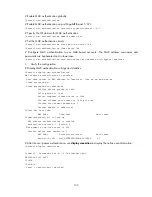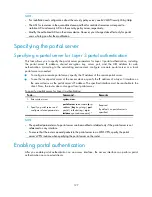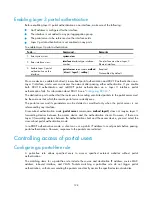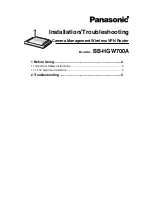
123
5.
After receiving the certificate request, the portal server sends an EAP authentication reply to the
authentication client, carrying the EAP-Message attribute values.
6.
The authentication client sends another EAP request to continue the EAP authentication with the
RADIUS server, during which there may be several portal authentication requests. The subsequent
authentication processes are the same as those initiated by the first EAP request, except that the
EAP request types vary with the EAP authentication phases.
7.
After the authentication client passes the EAP authentication, the RADIUS server sends an
authentication reply to the access device. This reply carries the EAP-Success message in the EAP-
Message attribute.
8.
The access device sends an authentication reply to the portal server. This reply carries the EAP-
Success message in the EAP-Message attribute.
9.
The portal server notifies the authentication client of the authentication success.
10.
The portal server sends an authentication reply acknowledgment to the access device.
The remaining steps are for extended portal authentication. For more information, see the portal
authentication process with CHAP/PAP authentication.
Portal stateful failover
The stateful failover feature supports hot backup of services on two devices. It can be configured on key
devices to avoid service interruptions caused by single point failures. When working normally, the two
devices synchronize the service information of each other. If one device fails, the other device takes over
the services. Traffic switchover between the two devices is implemented through VRRP or dynamic
routing (such as OSPF).
To configure this feature, specify an Ethernet interface as the stateful failover interface on each device,
and connect the two stateful failover interfaces through a failover link. For more information, see
High
Availability Configuration Guide
.















































